A Symposium on Coastal Resilience Highlights the Need for Transdisciplinary Science
Heath Kelsey ·
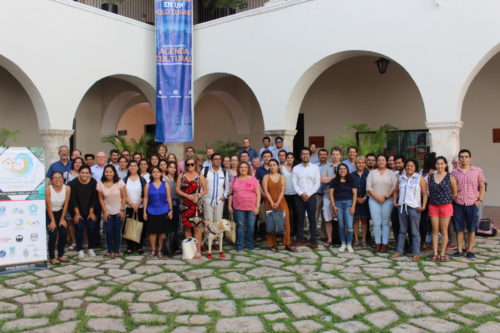
In 2016, Jane Hawkey and I visited Mérida and Sisal, on the Yucatán peninsula in Mexico to work with colleagues at the Universidad Nacional Autónoma de México (UNAM) Laboratorio Nacional de Resiliencia Costera (LANRESC) to begin the process of creating the Yucatán Coast Ecosystem Health Report Card. We had some great interactions with the scientists and stakeholders in the region, and felt that it was the beginning of a long term collaborative relationship. The first Yucatán Coast Report Card was released in 2017, and was a wonderful example of science communication and data synthesis. We’ve kept in touch ever since, and have had several students in our annual Ecosystem Health Report Card course.

This year I was invited to give a keynote presentation at the First International Coastal Resilience Symposium in Mérida, and it was a welcome return to the city and colleagues. I knew that the UNAM LANRESC group would put on a great meeting, and I was not disappointed. The meeting presenters represented wide variety of nationalities, expertise, and professional roles. Participants were from the Mexico, US, Portugal, Colombia, and Chile, and from universities, NGOs, and agencies, working in modeling, physical processes and engineering, ecology, management, and education. This multidisciplinary group was able to present highly varied and wonderful perspectives on resilience and sustainability of coastal socio-ecological systems, with a special focus on stresses from increasing ocean and air temperature, changes in precipitation patterns, and storm intensity.
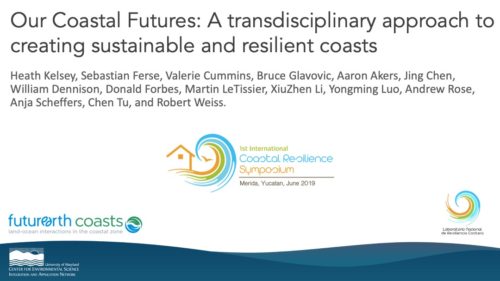
My presentation focused on integrating the report card creation process into two new initiatives that we’ve become involved in, including “Our Coastal Futures,” which is an initiative of Future Earth Coasts, and Resilient Rivers Blueprints, which is an initiative of the International Rivers Foundation. I emphasized that the benefits of measurement through a report card product allow tracking of progress toward goals, and adaptation to changing conditions, while the transdisciplinary process of the report card creation allows engagement of communities for developing a common vision for the ecosystem. The Our Coastal Futures and Resilient Rivers Blueprint initiatives provide a different and needed vision of management objectives beyond restoration or conservation, to develop targets that reflect not just apparent ecosystem health, but resilience to stress, and sustainable for generations. Using the techniques derived from the report card process to achieve the goals of resilience and sustainability can lead to outcomes that have achievable objectives for a future coast that are accepted by all, as legitimate in the eyes of stakeholders, credible to scientists and managers, and relevant to local communities. Ultimately, I think many of the researchers and projects represented at the symposium would be excellent partners in the Future Earth Coasts network of partners.
A few important themes came through from the other presenters at
the meeting in relation to addressing coastal resilience and sustainability:
- Multi-, inter- and trans-disciplinary research
and stakeholder engagement - Communication of science to policy makers
- Using models to understand and predict coastal
systems and hazards - Climate change
Multi-, inter-, and transdisciplinary science
We’ve been moving in the direction of transdisciplinary science
at IAN for a number of years, mostly without a conscious decision to do so,
rather because we recognized that engaging people seemed to be a powerful way
to foster impactful change. Scientists must become better at engaging policy
makers, but it’s even more powerful when a broad group of stakeholders and
scientists together present a shared message. The potential for this shared
messaging is enhanced greatly by engaging stakeholders in the process of
co-designing research, co-creating products, and co-developing recommendations.
In many cases, however, transdisciplinary science may not be warranted, for
instance where fundamental understanding of scientific processes are needed.
Engagement of the community or stakeholders would not be discouraged in those
cases, but basic research needs would be driven by multi or interdisciplinary
research teams. Ilena Espejel
has been teaching team approaches for transdisciplinary science to
graduate students using a stakeholder driven research priority. Stakeholders
provide a series of potential issues to resolve. Dr. Espejel guides the group
of students (Masters and PhD, representing multiple disciplines) to decide to
select a particular issue, and the students work as an interdisciplinary team
to research the issue, and co-produce a set of recommendations for solving the
issue. These recommendations are communicated to stakeholders at the end of the
semester.
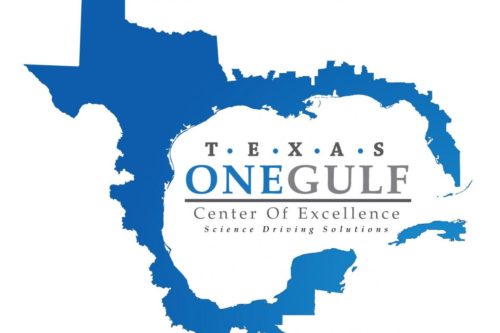
Dr. Katya Wowk, from the Harte Research Institute for Gulf of Mexico Studies at Texas A&M Corpus Christi, (HRI), and Director of the Texas One Gulf Center of Excellence discussed specifically that sustainability and resilience science will require full integration of social, economic, and environmental health. Katya also provided an overview of the resources available through Texas One Gulf, many of which IAN is interested in, including:
- Potential metrics for community resilience,
- A Resilience workbook,
- Community resilience index methods, and
- Facilitator training.
Communicating science to policy makers
Scientists present at the conference were invited as a result of their potential contributions to understanding of coastal socio-ecological systems. Attendees reported on topics related to tsunami wave propagation and timing, coastal erosion from beach and dune alteration, carbon sequestration and hazard reduction from mangroves, sea grasses, and coastal wetlands, barrier beach and inlet generation, ground and sea water interactions, tropical cyclone formation, to name only a few issues. But many of the scientists reported common issues related to get their science to the people who could most benefit from it. They report that even their best, most cited papers are only relevant to the scientific community. “No one is reading my work, except other scientists!” There continues to be a need to advance science communication techniques to allow relevant science to be understood and taken up by policy and decision makers. One participant lamented that elected officials seemed to act on opinions of selected stakeholders rather than scientific results that conflicted with those opinions. This sparked a discussion about the need for scientists to cultivate a relationship of trust with elected officials, something that IAN has previously emphasized in science communication lessons, but that we have since dropped from our science communication courses for the most part.
Using models to understand and predict coastal systems and
hazards
Numerous presenters used models to develop predictions or improve understanding of natural/physical systems or socio-ecological systems. For natural systems, these tended to be mathematical or deterministic models of particular processes like turbulence, current regimes, dune, and barrier island movement etc., but for socio-ecological systems, several speakers presented results from system dynamics models, which is an approach that IAN has been trying to advance for several years. Common refrains from modeling discussions appeared here too, like communicating complexity and uncertainty, calibration and model credibility, etc.
Climate Change
The effects of climate change from increased temperature, sea
level rise, ocean acidification, precipitation pattern changes, and storm
dynamics were infused throughout the symposium, and arguably represented the
most common theme from all of the discussions. Examples include the effects of:
Increasing water temperature on species distributions, coral health, water
chemistry, and rapid storm intensification; Sea level rise on infrastructure
and coastal populations from flooding; and Precipitation changes causing
drought some instances and record flooding in others. Christian Appendini
discussed the changing hurricane dynamics from increasing water temperature,
changing wind, and increasing humidity. Rapidly intensifying storms, like
Hurricane Patricia in 2015, which intensified from a Category 1 storm to a
Category 5 storm in less than 24 hours, made possible through deepening of warm
water layers. Similarly, Hurricane Irma in 2017 had a record duration of 8 days
as a major hurricane, made possible also by the presence of warmer waters. Also
in 2017, Hurricane Harvey created record rainfall of over 60 inches in some
places, necessitating the National Weather Service to revise their
precipitation map color scheme. Because of increasing wind shear (opposing
directions of high, and low-level winds), the frequency of tropical storm
formation is not predicted to increase, but of the storms that do form, more
will be more rapidly intensifying (like Patricia), longer in duration (like
Irma), and wetter (like Harvey).
[Hurricane Harvey track. Hurricane Harvey produced record
rainfall, prompting the National Weather Service to expand the color scheme
used for precipitation totals to accommodate the 60+ inches of rainfall on the
Texas Coast. Credit: Jim McMahon]
Report cards featured heavily
Several report card projects have evolved from that first workshop
that Jane Hawkey and I facilitated in 2016. Students and faculty are developing
additional ecosystem health report cards in Sisal on the northern Coast of
Yucatán, Tobasco on the southern gulf coast, freshwater sinkholes in the
Yucatán called cenotes, and for the Alacranes Reef National Park about 100km
North of Progreso on the Yucatán Coast. Additionally, LANRESC is developing a
series of coastal observatories, which will be linked to report card projects
in seven locations on the coast of Mexico. The report cards will directly use
data collected, archived, and sourced through these observatories. I also
suggested that the report card process could be used to identify potential data
to include in the observatories though a participatory process with nearby
communities.
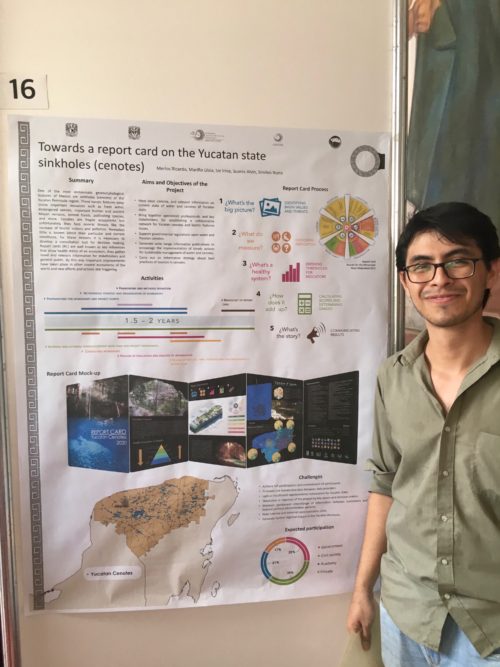
Another report card linkage is to ongoing efforts with HRI, where IAN collaborated on the first Texas Coast Ecosystem Report Card. HRI representatives at the symposium report that HRI is interested in expanding the Texas Coast Report Card to the rest of the northern Gulf of Mexico, perhaps in collaboration with The Water Institute of the Gulf, and to the southern Gulf of Mexico, leveraging the standardization of methods for coral reef ecosystem health monitoring pioneered by NOAA, and reported in the Coral Reef Ecosystem Health Status and Trends Reports that IAN has been partnering on.
There is quite a lot of activity in the report card space in the
Gulf. It is gratifying to see that the workshop in 2016 and the IAN report card
courses that so many of the faculty and students from LANRESC have participated
in ultimately have led to an explosion of report card efforts around the
region. I issued a few words of caution about losing sight of the importance of
using the report card as an opportunity for stakeholder and community
engagement, but the increase of report cards in the region is very exciting. It
was particularly rewarding to meet so many of the students in the virtual
report card course in person, that I’d only met online previously.
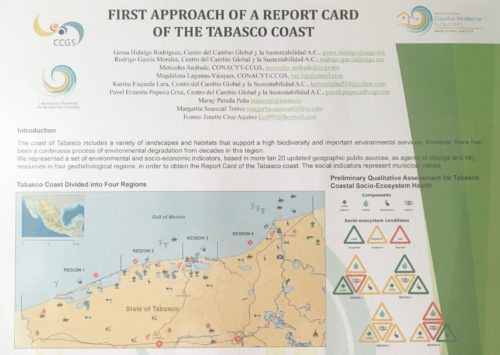
The venue for the meeting at the Universidad Autónoma de Yucatán, in the center of the historic district of Mérida. The meeting room was the perfect size for the 80 participants, and, as an auditorium, good for presentations, but not exactly inspiring of interaction among participants.
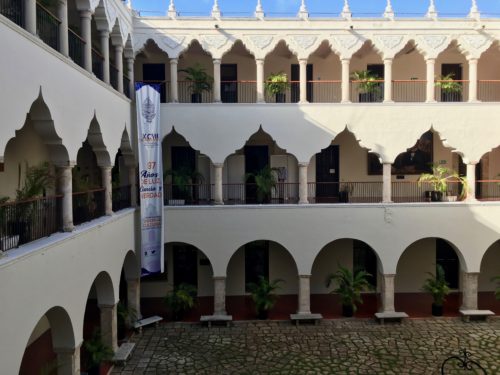
We found time to scheme during coffee breaks and over beers and
dinner, but some time specifically dedicated to networking could be an addition
worth considering. In fact, we made several suggestions (some practical and
some not) in the final session of the meeting. Future meetings promise to be
really productive, with sessions specifically designed to create synthetic
products addressing specific themes for each symposium. On Friday afternoon,
following the conclusion of the meeting, we visited the Mayan Ruins and cenote
at Dzibilchaltún, which was fascinating.

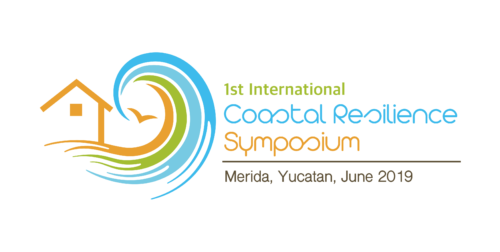
About the author
Heath Kelsey
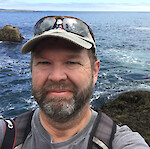
Heath Kelsey has been with IAN since 2009, as a Science Integrator, Program Manager, and as Director since 2019. His work focuses on helping communities become more engaged in socio-environmental decision making. He has over 10-years of experience in stakeholder engagement, environmental and public health assessment, indicator development, and science communication. He has led numerous ecosystem health and socio-environmental health report card projects globally, in Australia, India, the South Pacific, Africa, and throughout the US. Dr. Kelsey received his MSPH (2000) and PhD (2006) from The University of South Carolina Arnold School of Public Health. He is a graduate of St Mary’s College of Maryland (1988). He was also a Peace Corps Volunteer in Papua New Guinea from 1995-1998.
Next Post > Capturing Nature on the Job
Comments
-
Atika 6 months ago
Thank you for sharing this great information with us, i really appreciate your post!